Most Read in This Section
-
Nov. 5, 2024
-
-
-
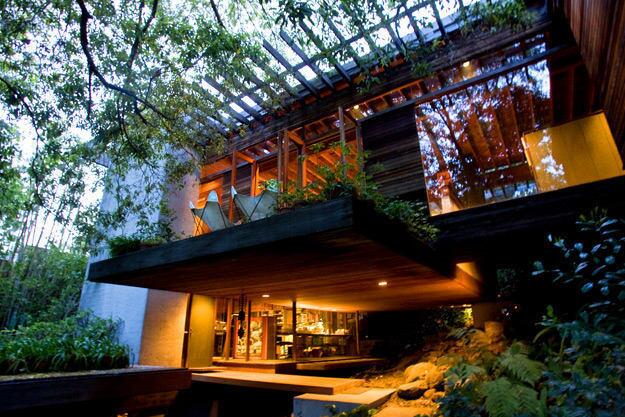
By Sean Mitchell
Of more than 100 houses that Ray Kappe has designed over his long and distinguished career, the one he designed for himself and his family in Los Angeles’ Rustic Canyon is the most important. “Maybe the greatest house in Southern California,” Stephen Kanner, the former president of American Institute of Architects’ Los Angeles chapter, said in a 2008 interview. That year, when the Home section polled architects, historians, academics and critics on Southern California’s best houses of all time, the 1967 Kappe residence landed at No. 8, ranked among classics by Frank Lloyd Wright, Rudolph Schindler, Richard Neutra, John Lautner and Charles and Ray Eames. (Ricardo DeAratanha / Los Angeles Times)
Click here to read the full article in story format.
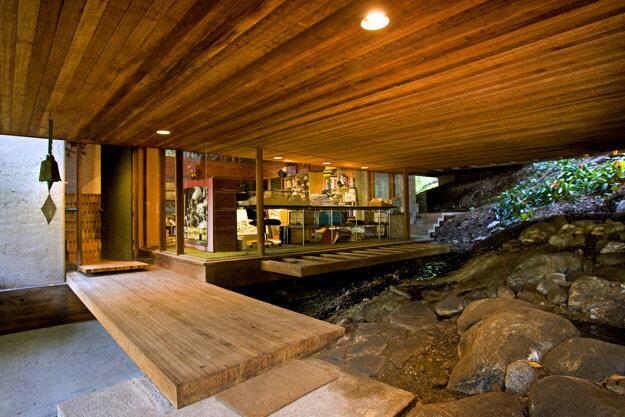
Unlike most hillside homes, the Kappe house isn’t tucked into the hillside. Rather, it runs along and above it, seeming to hover over the slope on Brooktree Road in the Palisades. The property, 100 feet wide, is a transitional zone between a level lot on one side and a lower neighbor on the other. The Kappe residence floats across the resulting 45-degree angle on seven levels, with cantilevered wooden decks, trellises and platforms reaching out into the environment. From the street, a flight of concrete pavers leads to a wooden footbridge and eventually the front door, pictured here, set at a right angle to the street so as to be inconspicuous. (Ricardo DeAratanha / Los Angeles Times)
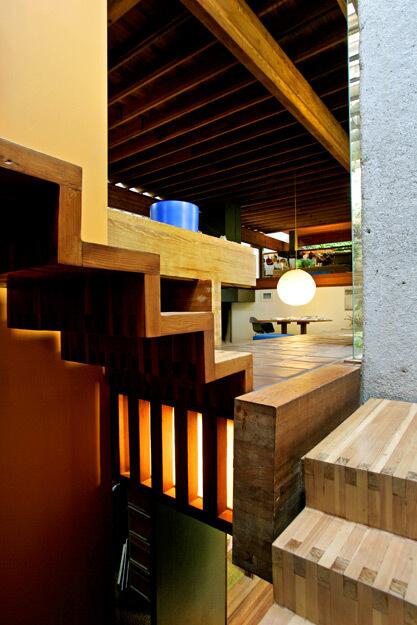
Kappe, who taught at USC and Cal Poly Pomona before becoming founding director of the Southern California Institute of Architecture, designed the stairs leading up to the main living areas without handrails. The move wouldn’t be allowed under current construction code, but for Kappe, it preserves the free-flowing nature of the design and keeps views unobstructed. (Ricardo DeAratanha / Los Angeles Times)
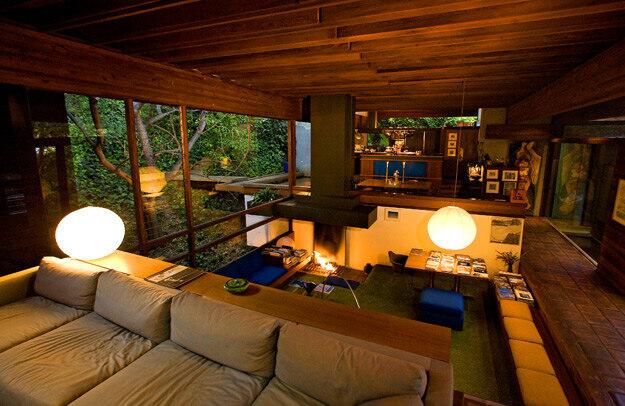
From inside, views run in every direction, yet the landscaping provides a natural seclusion. “It’s remarkable for the way it’s constantly relating back to the hillside,” Los Angeles architect Ron Radziner said. “It’s the quintessential tree house.” Added Linda Dishman, head of the Los Angeles Conservancy: “Inside that house, you feel like you’re one with nature.”
The 2.5-foot-thick laminated beams are made of Douglas fir. The rest of the lumber is redwood. The four bedrooms have doors, but the rest of the home is pure openness, individual spaces defined and quietly segregated by subtle changes in elevation. Described by one critic as “a controlled explosion of space,” the Kappe residence has the quality of an atrium ingeniously adapted for work and play. (Ricardo DeAratanha / Los Angeles Times)
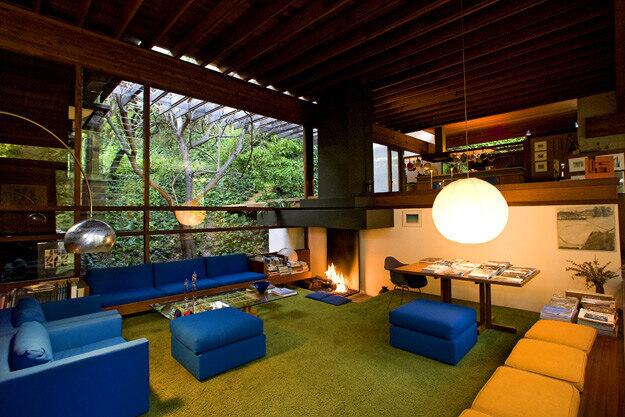
The ceiling over the central family area is 14 feet high. Cushioned benches line the walls of areas meant for relaxation or conversation. Even the carpet is green, another choice made to pull the outdoors inside. Interior roof joists run across the beams and through the exterior wall, extending 12 feet beyond as a trellis. None of the wood was stained or treated other than with clear Thompson’s WaterSeal. (Ricardo DeAratanha / Los Angeles Times)
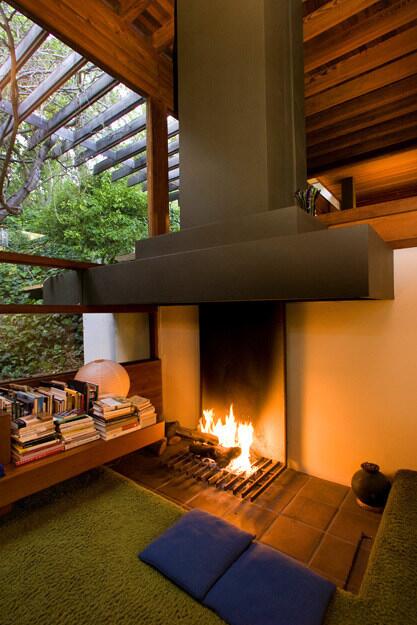
The living room fireplace, like the rest of the house, is open. The ratio of glass to floor area is about 50-50, predating later California residential code that limited glass to 20% and furthering the feeling of the house adrift in nature. (Ricardo DeAratanha / Los Angeles Times)
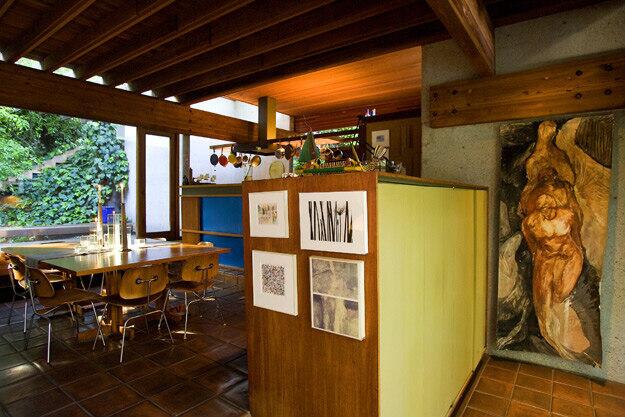
The dining room is up a few steps from the living area — and down a few steps from the kitchen, off in the distance. The slight changes in elevation make each room feel like a separate space despite the lack of walls. “Some people can’t live like this. They want spaces that hug you,” Kappe said. “But I always liked to push out. When I was small, I was always at the window.” (Ricardo DeAratanha / Los Angeles Times)
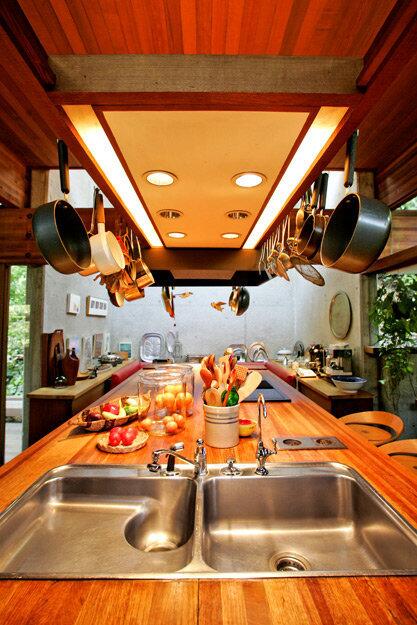
The kitchen is at the highest end of the house. Kappe, described by Architectural Record as “an unsung modern master,” has designed many houses of steel and concrete and has claimed not to prefer one material over another. His own house, with all its beautiful wood, has earned him the label of “warm modernist.” (Ricardo DeAratanha / Los Angeles Times)
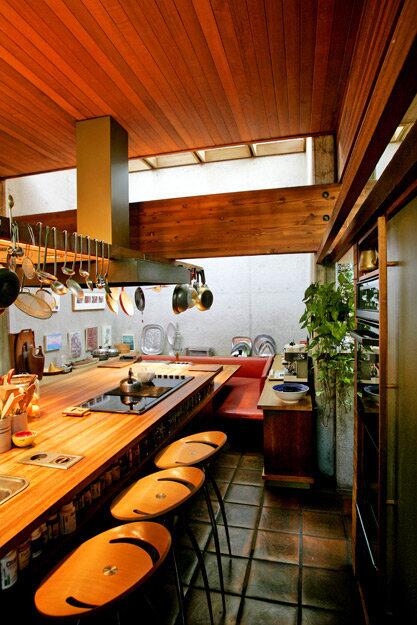
Note the storage under the counter and the 1-foot-square ceramic tile used for the floor, a subdued earthtone. The structural plan allows 4,000 square feet of wood and glass to rest on beams bolted to six massive, deep-set, U-shaped concrete towers. The seating nook in the distance sits inside one of these six towers. When running springs prevented a conventional foundation, Kappe instead raised the house up on these towers, “letting the site flow through it,” Kappe said. He had to sink the front concrete columns down 30 feet through clay to reach bedrock. The airiness of the house is enhanced by the indirect natural light that floods rooms from clerestory windows and skylights that cap the concrete columns. (Ricardo DeAratanha / Los Angeles Times)
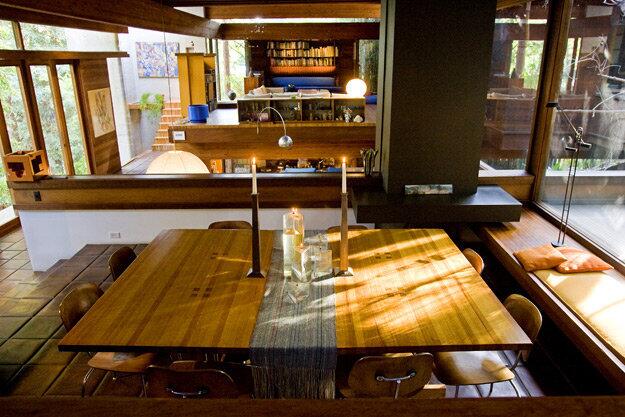
Standing in the kitchen, you can look one way and gaze over the sunken dining and living area and across to what had been the children’s wing of bedrooms and baths, now quarters for visiting grandchildren or other guests. Look the other way through the window, and you’ve got a view of the ivy-covered hillside. (Ricardo DeAratanha / Los Angeles Times)
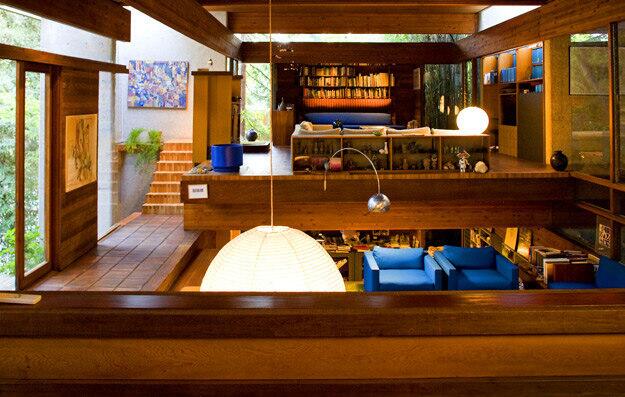
Stepping from the kitchen back down into the dining room, you can appreciate the free-flowing, multilevel design even more. It allows for eye contact from the highest point in the kitchen to the lowest point, a space Kappe used as his studio, which can be seen below, past the blue chairs.
Kappe served as his own contractor and oversaw construction himself. “He wasn’t a person who drew,” says Pritzker Prize-winning architect Thom Mayne, a former faculty colleague of Kappe’s at Cal Poly Pomona. “He was a person who built his ideas, and you can see it in the house.” (Ricardo DeAratanha / Los Angeles Times)
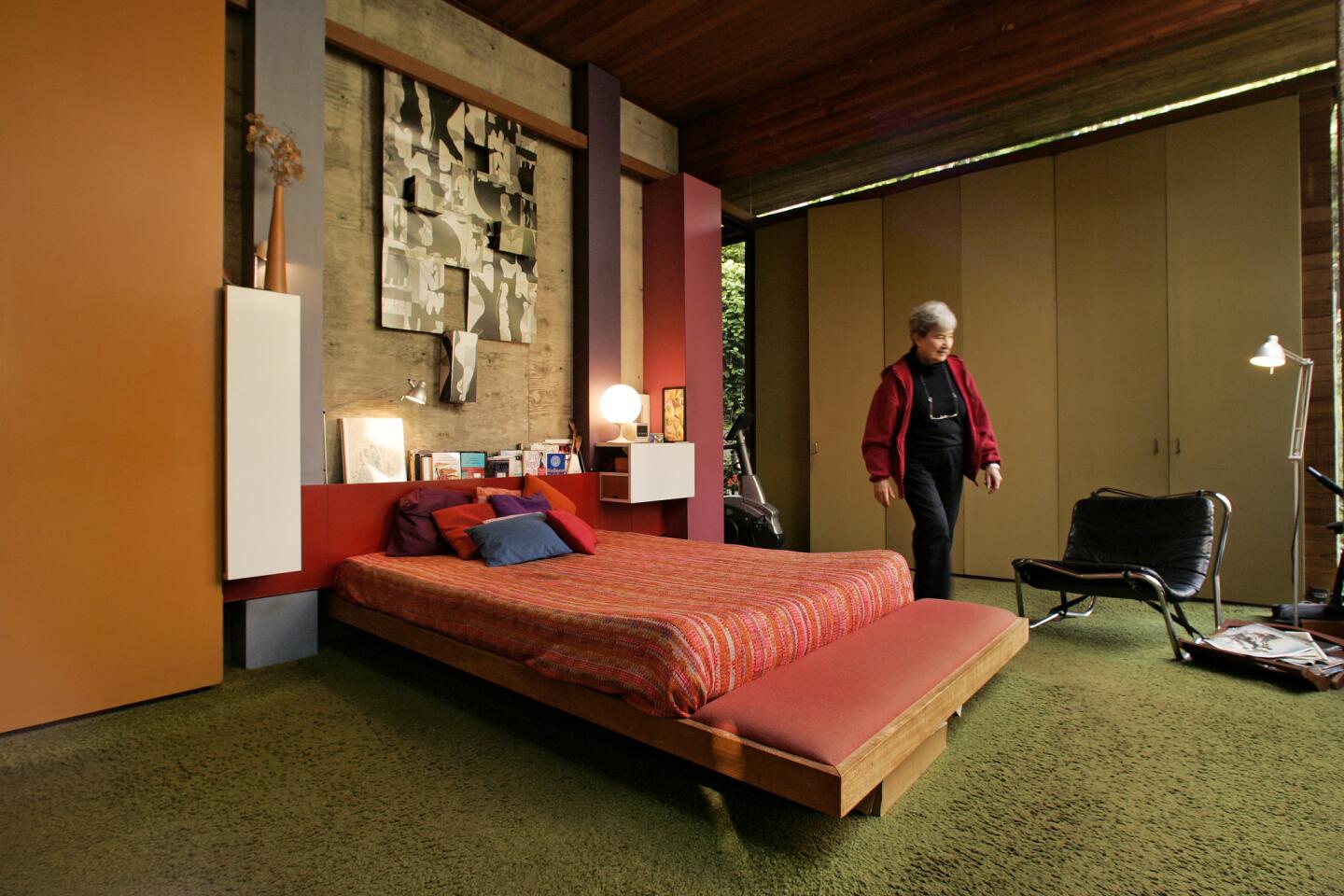
Kappe’s wife, Shelly Kappe, passes through the master bedroom. (Ricardo DeAratanha / Los Angeles Times)
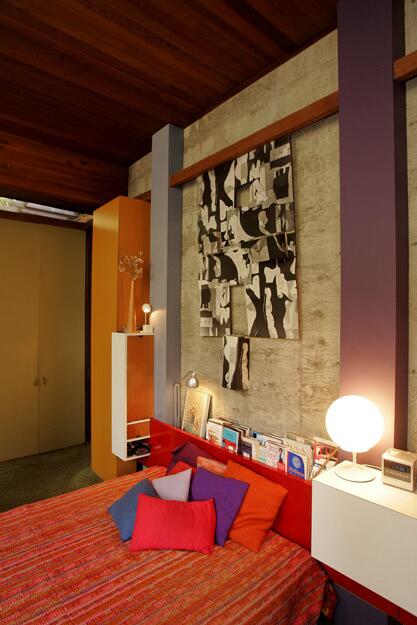
Another view of the bedroom. (Ricardo DeAratanha / Los Angeles Times)
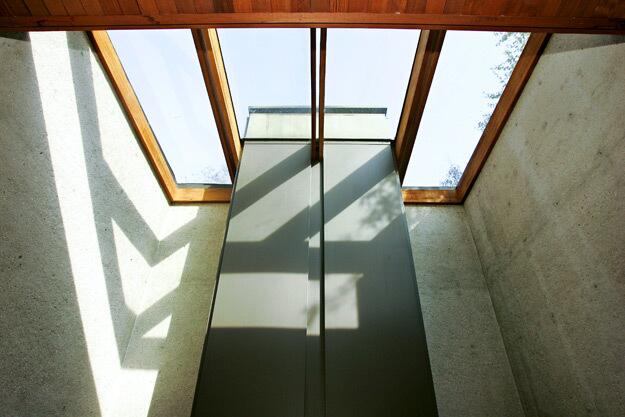
Skylight in the bedroom. (Ricardo DeAratanha / Los Angeles Times)
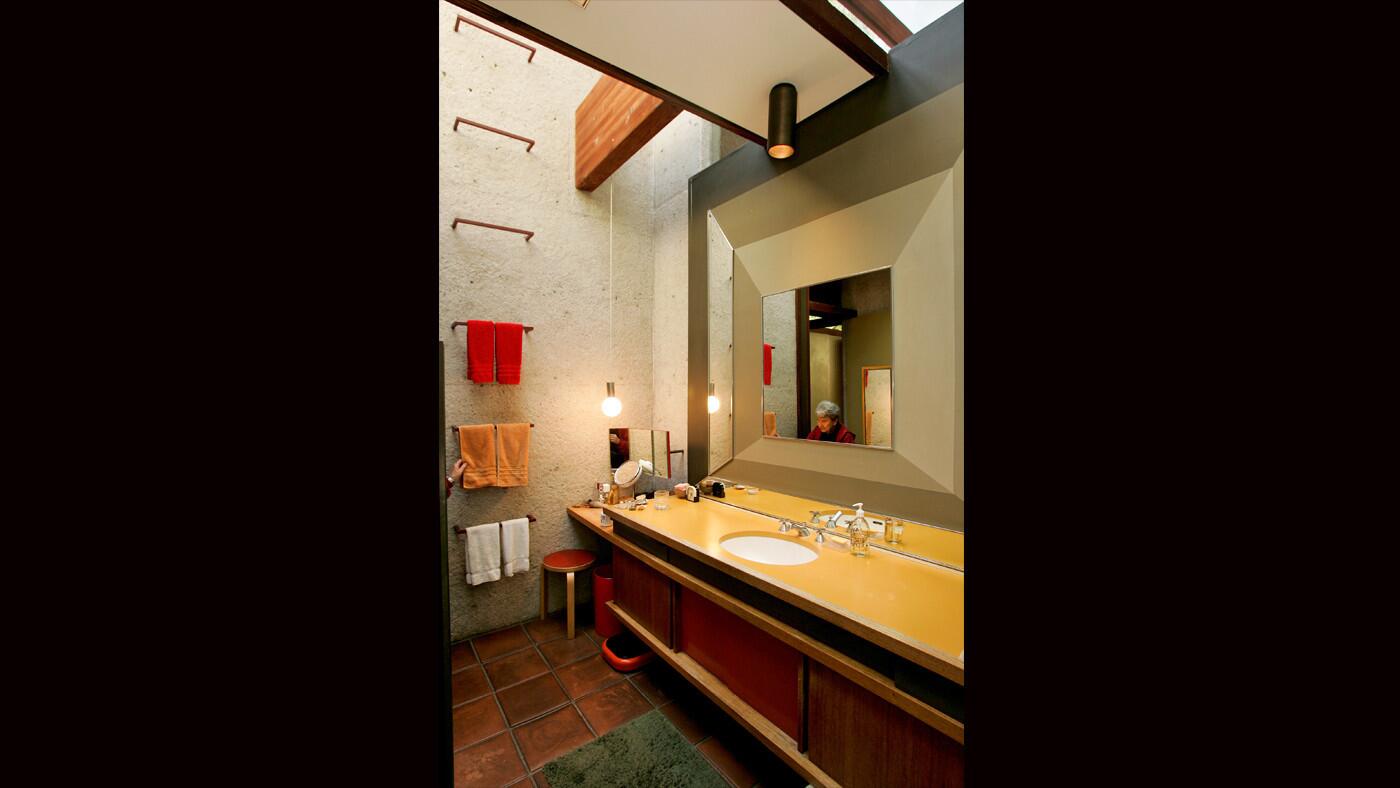
The master bathroom ... (Ricardo DeAratanha / Los Angeles Times)
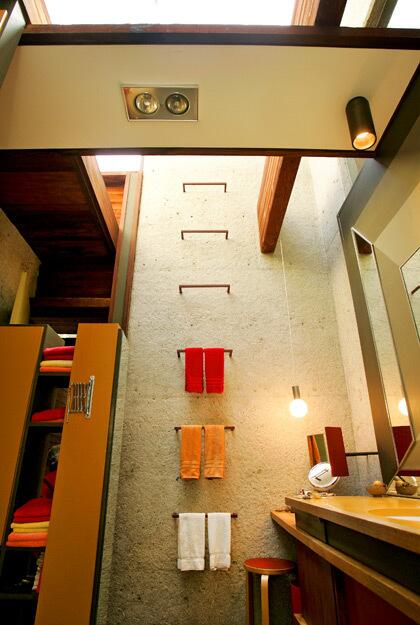
... with more filtered sunlight from above. (Ricardo DeAratanha / Los Angeles Times)
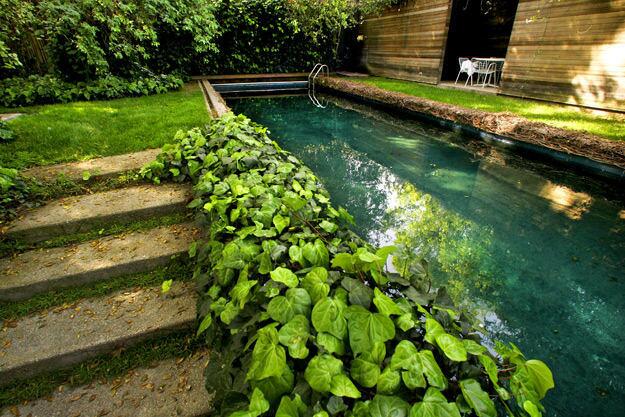
Stairs climbs the hillside in back to a point of the yard that’s level with the roof. A rectangular swimming pool’s edges are fully collared with ivy in spring and summer, so as to blend into the landscape. Nearby is a minimalist wooden pool house and spa and a rooftop deck. Views into the surrounding trees of the canyon suggest the vantage point from inside a forest, not a house on an L.A. lot. (Ricardo DeAratanha / Los Angeles Times)
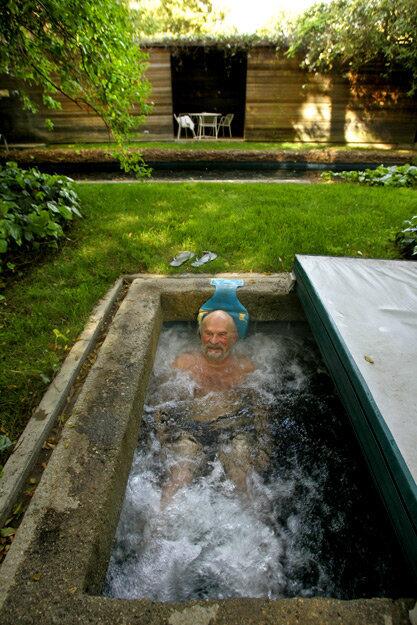
Kappe in his spa. (Ricardo DeAratanha / Los Angeles Times)
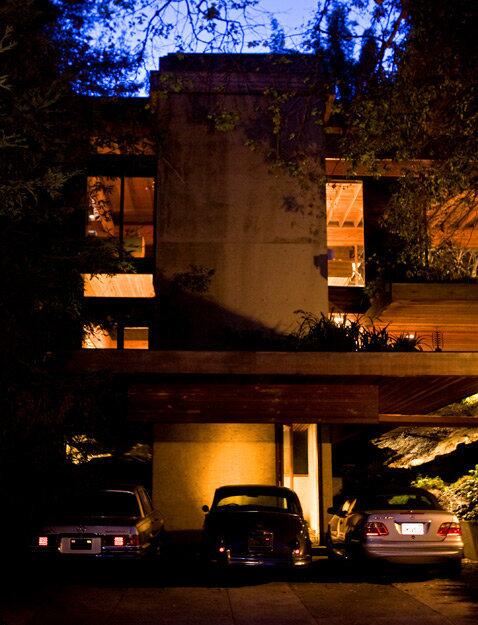
Despite the sense of openness inside, the house manages to preserve its privacy from the street, and mature eucalyptus, sycamore, oak and bamboo shroud the home in an evergreen canopy.
Interactive tour: 360-degree panoramas allows you to tilt, pan and zoom inside Ray Kappe’s house
More in the series: Frank Lloyd Wright’s Ennis house, a 1924 masterpiece in concrete block (Ricardo DeAratanha / Los Angeles Times)
Nov. 5, 2024